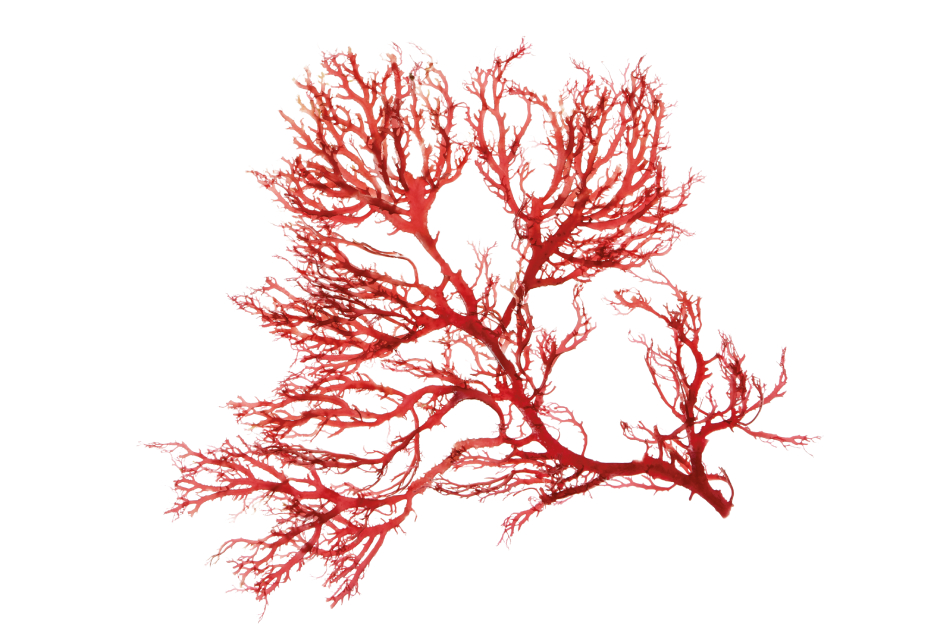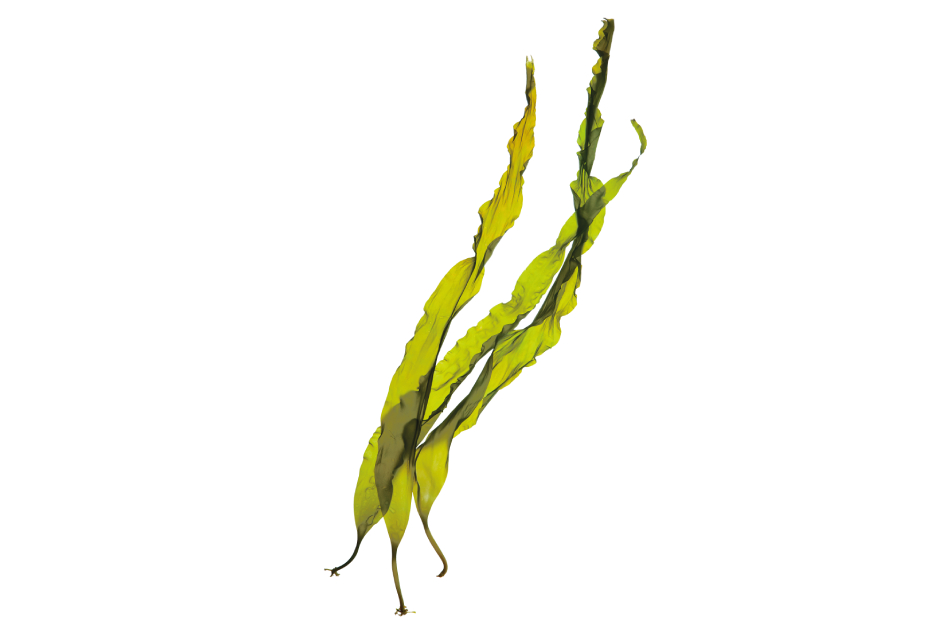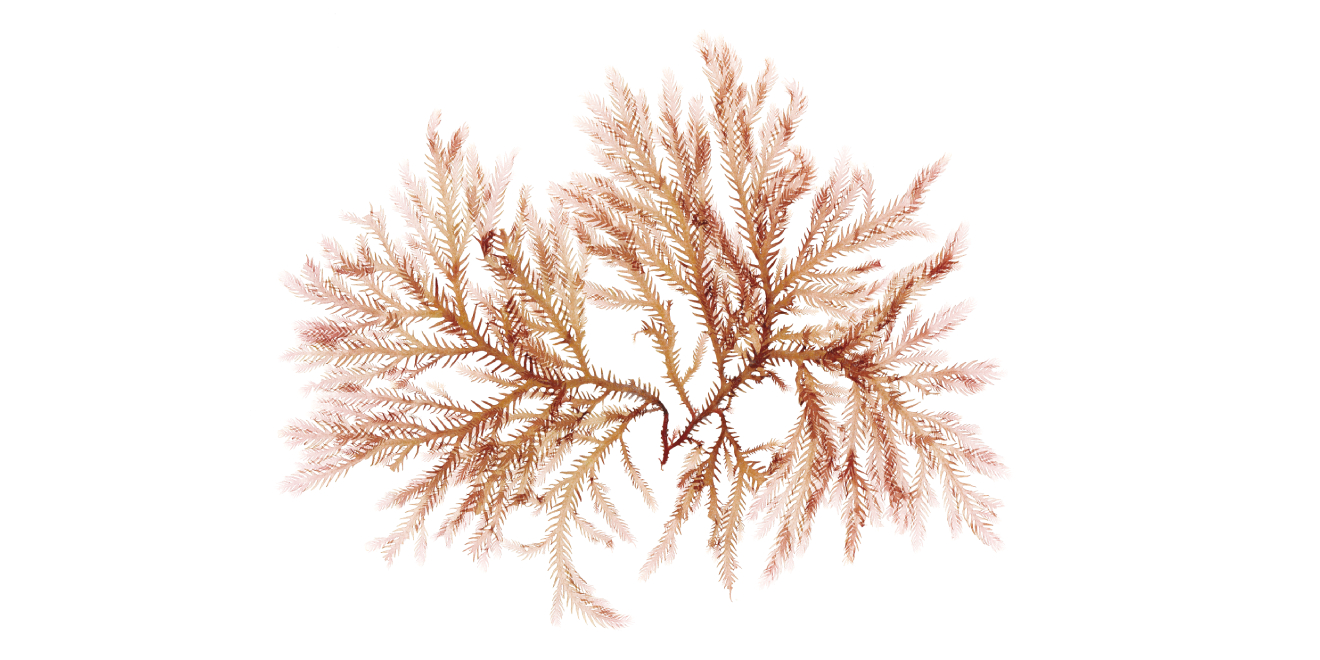Algae fascinate us more than ever in today’s world – and for good reason: their amazing properties suggest promising solutions to some of the biggest challenges of our time. Let’s take a closer look!
Rouges, vertes, phosphorescentes, comestibles, dépolluantes, antioxydantes… il y en a, si l’on peut dire, pour tous les goûts – 72 500 espèces différentes, pour être précis. Ces organismes vivants vieux de plus de 3,8 milliards d’années, à peu de choses près, comptent parmi les plus anciennes formes de vie sur Terre.

A piece of history
Humans became interested in algae very early on in our history - the first evidence of their consumption takes us back more than 14,000 years to Monte Verde in Chile. Their medicinal use can be traced back to the ‘Shennong bencao jing’, a book on therapeutic plants written around 2800 BC. In slightly more recent times, algae were cultivated as fertiliser in the Middle Ages, then as a source of lye for the manufacture of glass and then soap in the 17th century. In the early 19th century, naturalists in their droves plunged head-first into the water to study and collect them!
Fast forward. Nowadays, algae are everywhere – though we may not necessarily be aware of it. Used as a flavour enhancer in the food industry, as an antioxidant as famous as it is widespread in cosmetics, a binder for preparing paints, a coagulant used in the composition of our bandages... Aristotle should have thought twice before he placed them last in his “chain of beings”!
What about tomorrow?
Algae are at the heart of pretty much everything we consume, but they play a more important role too: they are a fundamental component of our existence on Earth. More than half of the oxygen in our atmosphere comes from the oceans. In other words, from algae. Gigantic reservoirs of biodiversity, they are the food chain’s most fundamental producers and constitute the most extensive habitat on the planet, housing an enormous number of species. Their extraordinary complexity and unique properties are still largely unknown, but it’s already clear to see that algae provide the answers to the crucial challenges we are facing.

For example, the ability to capture atmospheric carbon and their lightning-fast growth (up to 90 centimetres per day for some species!) make algae a powerful ally in the fight against global warming. Once we recognise this, there are numerous avenues to explore – from the glaringly obvious to the most unlikely of solutions. While some dream of forests of living algae to ease the burden on Planet Earth, others can already envisage algae taking over our streets: Parisian architecture firm XTU, for example. Their concept of bio-facades filled with algae would make it possible to regulate the interior temperature of buildings – drastically minimising our energy consumption – and to depollute cities, courtesy of algae’s ability to absorb carbon. A little futuristic, perhaps, but undeniably daring.
Large-scale challenges
Today, there are nearly eight billion human beings on Earth. By 2050, according to the United Nations, that number will have reached 10 billion. With our resources dwindling a little more each day, one thing is clear: we must rethink our consumption patterns. Here too, algae have more than one card to play.
The first challenge is to replace fossil fuels. No less than that! It’s an ambition that is not as fantastical as it may sound. The algal biomass, created as plants transform light into energy, is a potential fuel source that only needs to be harnessed in order to overcome the problems of reducing our reliance on non-renewable energy. Electricity, biofuel... ideas are rife.

Next – if the algae has any energy left – another challenge awaits, and not a small one: to become the alpha and omega of our plates. It’s a prospect that does not daunt scientists and industrialists who see farming algae as a viable alternative to livestock farming. After all, algae require minimal space, grow extremely fast, and only need salt water and sunlight to grow. As if that wasn't enough to recommend them, they are full of protein, fibre, iron, and vitamins. Would you like some more seaweed?
70% of our planet is covered in water. According to the Safe Seaweed Coalition (whose work is led by the CNRS and supported by the United Nations), if we dedicated just 2% of the ocean to seaweed cultivation, we could feed up to twelve billion people... Another possible route, which will please committed carnivores: the Journal of Cleaner Production suggests that if we were to change the diet of livestock to an algae-based regime, methane emissions (a greenhouse gas that has 25 times more effect on global warming than CO2) from cows would decrease by 98%. Now there’s an idea that would give us a new perspective on the seabed!

